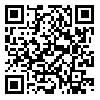Volume 12, Issue 5 (2021)
LRR 2021, 12(5): 385-404 |
Back to browse issues page
Download citation:
BibTeX | RIS | EndNote | Medlars | ProCite | Reference Manager | RefWorks
Send citation to:



BibTeX | RIS | EndNote | Medlars | ProCite | Reference Manager | RefWorks
Send citation to:
Chalak A. Power Dominance and Interaction Features in Iranian EFL Teachers’ Classroom Discourse. LRR 2021; 12 (5) :385-404
URL: http://lrr.modares.ac.ir/article-14-48287-en.html
URL: http://lrr.modares.ac.ir/article-14-48287-en.html
Associate Professor, Department of English, Isfahan (Khorasgan) Branch, Islamic Azad University, Isfahan, Iran , azichalak@gmail.com
Abstract: (1518 Views)
Classroom discourse refers to the language and interaction used by the teacher and the students to communicate and shape learning in the educational context. The present study focused on Iranian EFL teachers’ classroom discourse by observing their dominancy, teacher talk, question types, and interactions in their classes. To do so, through a non-experimental, descriptive research design, 20 female experienced teachers with the age range of 30-40, teaching at an upper-intermediate level in different language institutes in Isfahan, Iran were selected based on the convenience sampling. Two classes of the teachers were observed, the sessions were recorded, and their classroom discourses were transcribed and later analyzed. Moreover, to increase the validity and reliability of the research, a semi-structured interview was conducted with volunteer participants; their reflections on their communication with the learners and discourse types were collected and analyzed using descriptive statistics in terms of frequency and percentages. The findings of the study showed that the teachers made use of specific discourse to ascertain their dominance and control in their classes. The findings also revealed that the teachers used more monologic discourse patterns in their classes rather than dialogic ones. Teacher talk far exceeded student talk, Initiation-Response-Feedback pattern dominated the classroom discourse; and display questions were used more frequently than referential ones. These findings could benefit teachers to be more conscious about type of CD and its effect on student-to-student and teacher-to-student interactions. It could also serve the purpose of critical classroom discourse analysis
Keywords: classroom discourse, display/referential questions, interaction features, monologic/dialogic patterns, IRF pattern, power dominance
Send email to the article author
| Rights and permissions | |
 |
This work is licensed under a Creative Commons Attribution-NonCommercial 4.0 International License. |









